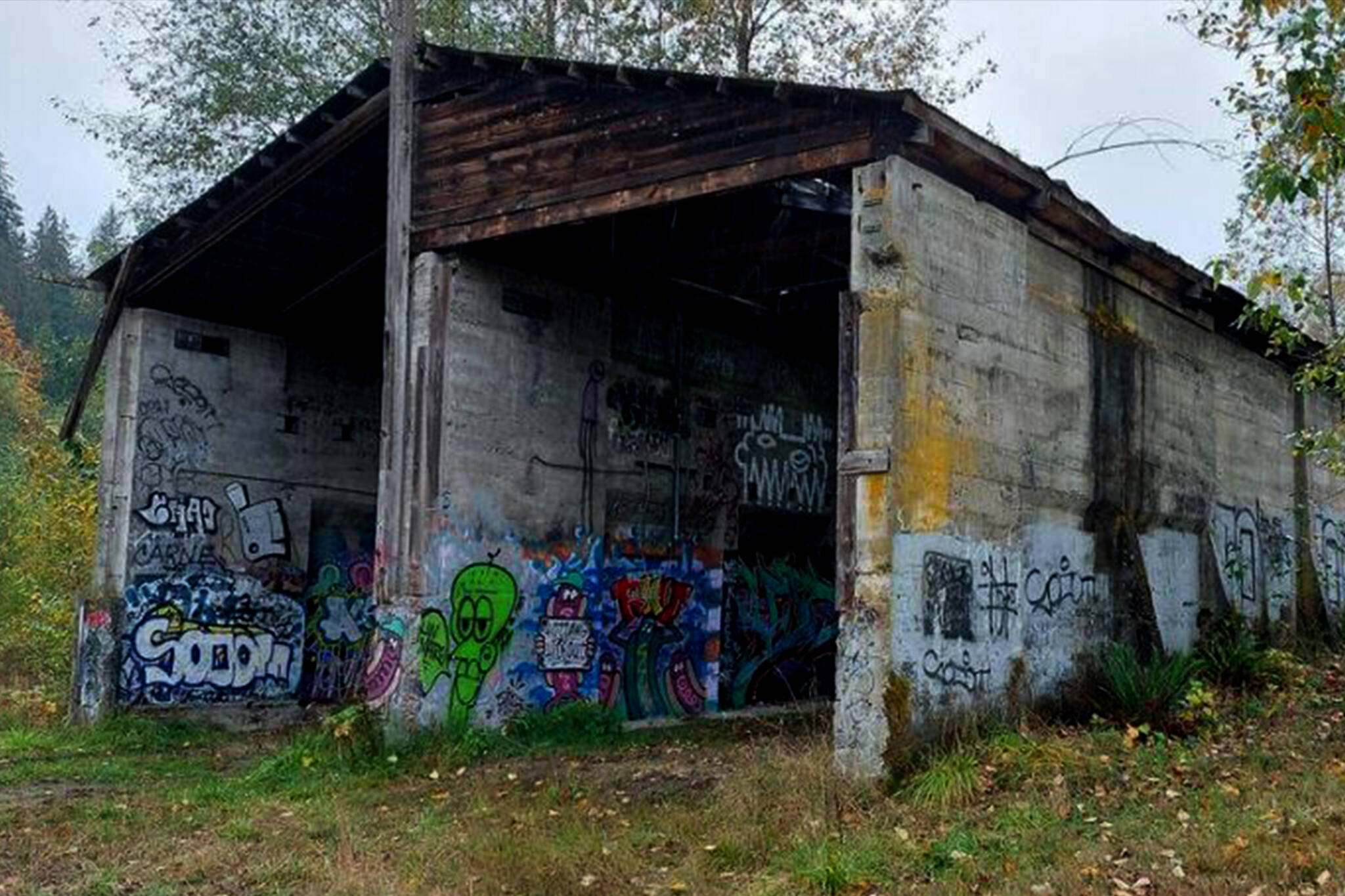The Kiln Building, a remnant of the defunct Preston Mill Company, has been named a King County Landmark, skirting fears of demolition of the early 20th century building.
Landmark status was awarded in June by the King County Landmarks Commission. During a meeting at the Preston Community Center, across the street from the Kiln Building, the commission unanimously approved a landmark request submitted by the Fall City Historical Society.
Working alongside consultant Sarah Martin, members of the historical society spent nearly 18 months researching and writing the 50-plus-page application, said Rick Divers, president of the Fall City Historical Society.
The 4,700-square-foot, concrete Kiln building is at the lower end of what is now Preston Mill Park. Built in roughly 1910, the structure was used to dry larger logs before they could be processed.
“It’s unique in the Pacific Northwest for what it was doing,” Divers said. “To the best of our knowledge and research, there may only be one or maybe two buildings similar to it.”
The Kiln Building is one of three remaining structures still standing from the Preston Mill Company, which was founded by Swedish-American immigrants in 1896. In 1997, King County acquired the property and cleared most of the structures, according to the historical society. The property later became Preston Mill Park.
After years of discussions, King County Parks began a long-awaited improvement project at the park last summer. The project included considerations about what to do with the remaining mill buildings — with the possibility of demolition.
Two of the three buildings, including the old mill shed, were “dilapidated,” and would need to come down, park officials said. The Kiln Building, while also in poor condition, had restoration potential and former King County Councilmember Kathy Lambert secured a grant for the Fall City Historical Society to start the landmark status process.
Lambert was a close associate of Jim Ellis, a civic leader and conservationist best known for preserving open space and negotiating the cleanup of a polluted Lake Washington. Ellis grew up around Preston and wanted to see the mill buildings preserved, Divers said.
Approval of landmark status ensures the Kiln Building will remain standing. It also adopts a stricter set of guidelines for how the building can be updated, with the goal of preserving its “historic integrity.”
TJ Davis, a project manager with King County Parks, said they are wrapping up phase one of improvements at Preston Mill Park, adding new trails, a paved parking lot, restrooms and a new pedestrian tunnel that will connect the park to the Preston Community Center. They hope to have the park open in roughly four weeks, he said.
“It’s hard to tell right now,” he said. “But we’re in the final stages.”
Phase two of the project, which is currently unfunded, will involve the demolition of the Mill Shed and relocation of the old shingle mill saw to some sort of exhibit, he said.
Then, the question becomes what to do with the Kiln Building. While its status as a county landmark ensures its preservation, it is undetermined what the building could be used for. It could include picnic or even recreation space, Divers said.


